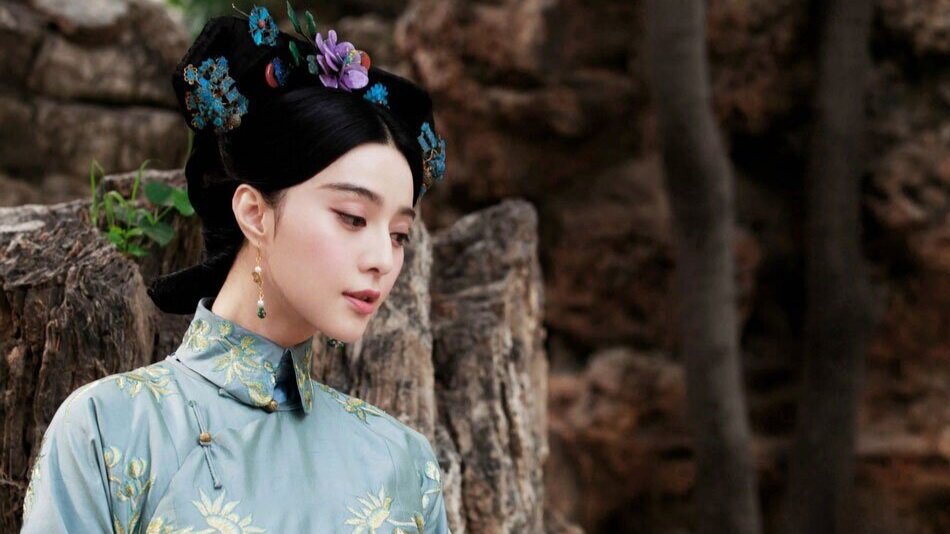The Lady in the Portrait
A film with definite limitations but possessed of an extraordinary beauty.
Charles de Meaux, a Frenchman, is very much the creator of this film which, made back in 2016, has taken a long time to reach us. Now that it has done so its very title seems to encourage comparisons with a work made two years later, Céline Sciamma's acclaimed Portrait of a Lady on Fire. As it happens the two films do have quite a lot in common: both of them are period pieces (this one being set in China in 1768 during the reign of Emperor Qianlong), both feature the painting of a portrait (here Jean-Denis Attiret, a Jesuit priest from France, is commissioned to illustrate the style of western art by portraying Ulanara, a former courtesan but now empress) and both explore a forbidden love. In Sciamma's film it is a lesbian passion that is central whereas this Chinese tale, drawing loosely on real life characters, shows the painter attracted to Ulanara despite his priestly role prohibiting it. As for Ulanara herself, her standing as empress and her duties in the Imperial Court define what is required of her and in any case their liaison occurs at a time when China is suspicious of the impact of westerners generally but especially of Christians who are anxious to obtain converts.
However, comparing these two works is rewarding in ways that go far beyond the plot parallels: further similarities emerge yet differences do so too. Both works are visually striking but, if Sciamma's work is painterly in its compositions, The Lady in the Portrait finds beauty through its production values and the photography in colour and 'Scope partly by de Meaux himself (when I described this film as his creation I had it in mind that beyond being the director and co-photographer he is also a co-writer, co-producer and co-editor). It is truly sumptuous and, if Melvil Poupaud's role as Attiret seems rather underwritten, there is no doubt that Fan Bingbing as Ulanara, Huang Jue as the Emperor and Jin Shi-Jye as the intendant, General Chen, are all well cast.
Neither of these films is fast-paced but, whereas Sciamma's film feels modern despite its 19th century setting due to its emphasis on the female gaze and its contemporary attitude to society's past pressures on lesbians, The Lady in the Portrait plays like a traditional work, something even more of the past than, say, 1993's Farewell My Concubine. For at least half of its length that fact won't prevent this handsome work appealing strongly to the right audience. Sadly, though, the second half is much less effective. That the pace grows even slower is not a help, but it is the storytelling that falters sufficiently to undermine much of the film's attraction. Indeed, despite the slow pacing the events that bring the story to a close are not sufficiently detailed to clarify motivations fully and to bring home the final tragedy. The film does tend at this stage to bring in more about the interplay between East and West but at the expense of the personal drama and with a tiresome vagueness as to how much time has passed in the process. Ultimately one feels disappointed, but there is not the least doubt that the first half radiates a breathtaking beauty rare in cinema.
Original title: Le portrait interdit.
MANSEL STIMPSON
Cast: Fan Bingbing, Melvil Poupaud, Jin Shi-Jye, Huang Jue, Wu Yue, Thibault de Montalembert, Féodor Atkine, Guillaume Le Du, Wang Yanan.
Dir Charles de Meaux, Pro Charles de Meaux, Timothy Mou and Huang Tao, Screenplay Charles de Meaux and Michel Fessler as adapted by Mian Mian, Ph Dong Jinsong and Charles de Meaux, Art Dir François-Renaud Labarthe, Ed Catherine Libert and Charles de Meaux, Costumes Sandra Berrebi.
Evergrande Pictures/Anna Sanders Films/SFDC/Backup Films-Cinefile World.
108 mins. People's Republic of China/France. 2017. Rel: 4 September 2020 Cert. 15.


